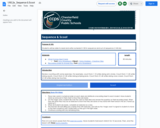
Purpose & SOL
Students will be able to read and write numerals 0-120 in sequence and out of sequence (1.NS.2a)
- Subject:
- Health/Physical Education
- Mathematics
- Physical Education
- Material Type:
- Game
- Author:
- Kristen Callan
- Date Added:
- 09/25/2024

Purpose & SOL
Students will be able to read and write numerals 0-120 in sequence and out of sequence (1.NS.2a)
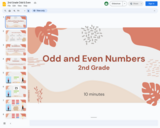
Odd and Even Numbers

I created this board game to give my 2nd grade students review of 3D shapes. They travel through space, trying to make it back to earth. This game supports sol 2.13, identify, describe, compare, and contrast plane and solid figures (circles/spheres, squares/cubes, and rectangles/rectangular prisms. Before playing this game, my students completed activities using manipulatives to identify solid shapes, the number of vertices, edges, and faces, and traced the faces of the cube and rectangular prism in order to build understanding of the relationship between plane and solid figures. My students played this game in small groups of 3-5 students. They take turns rolling a die, jump to the number rolled, and answer the question in the box they land on. My students love to play board games! As a result, they are more attentive and motivated to learn.
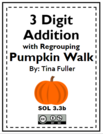
My students need lots of practice to master addition with regrouping, so I created this fun game to help them practice. This activity supports sol 3.3b, create and solve single-step and multi-step practical problems involving sums or differences of two whole numbers, each 9,999 or less. The students make a big circle around the room and play a cakewalk style game. When the teacher stops the music, they sit in front of the closest card and add the two numbers. Students use their knowledge of place value and estimation to determine if their answer is reasonable. I created this activity during the week of Halloween so the pumpkins were a big hit with my students who really enjoy movement activities.
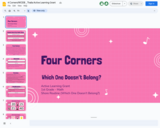
Standards of Learning
The student will participate in collaborative and partner discussions about various texts and topics. (ELA.1.1.1d)
I Can Statement(s)
I can use an appropriate voice level and give a reason to support my answer.

Want to learn about how to describe matter and sort as well as learn about impacts of computing at the kindergarten level? If so, this fun and easy lesson is for you!

Challenges students to think outside of the box to find examples of government around their school campus. All areas of the curriculum are covered and students have to defend their answer.
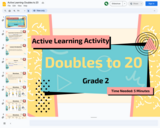
2.CE.1d Demonstrate fluency with addition and subtraction within 20 by applying reasoning strategies (e.g., doubles, near doubles, make a-ten, compensations, inverse relationships).
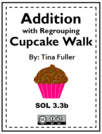
My students need lots of practice to master addition with regrouping, so I created this fun game to help them practice. This activity supports sol 3.3b, create and solve single-step and multi-step practical problems involving sums or differences of two whole numbers, each 9,999 or less. The students make a big circle around the room and play a cakewalk style game. When the teacher stops the music, they sit in front of the closest card and add the two numbers. Students use their knowledge of place value and estimation to determine if their answer is reasonable. Movement activities are always a big hit in my classroom! This game is one of my students’ favorites!
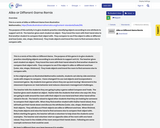
This is a remix of Alike or Different Game from Illustrative Mathematics, https://tasks.illustrativemathematics.org/content-standards/tasks/515. The purpose of this activity is to give students practice classifying objects according to one attribute to support sol K.12. The teacher gives each student an object. They travel the room with their hand raised to find another student to compare their object with. They compare to see if the object is alike or different and how (color, size, shape, thickness). They trade objects and travel the room to find someone else to compare with.
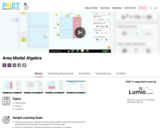
Build rectangles of various sizes and relate multiplication to area. Discover new strategies for multiplying algebraic expressions. Use the game screen to test your multiplication and factoring skills!
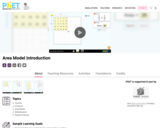
Build rectangles of various sizes and relate multiplication to area. Partition a rectangle into two areas to discover the distributive property.

Build rectangles of various sizes and relate multiplication to area. Discover new strategies for multiplying large numbers. Use the game screen to test your problem solving strategies!
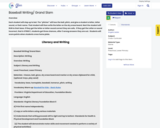
Each student will step up to bat. The “pitcher” will toss the ball, pitch, and give a student a letter, letter sound, or their name. That student will then write the letter on the dry erase board. Next the student will RUN to their base. If they get the letter or letter sound correct they are safe, If they get the Letter or sound incorrect, that is STRIKE 1, students get three chances, after 3 wrong answers they are out. Students will score points when students cross home plate.

2.NS.3 The student will use mathematical reasoning and justification to solve contextual problems that involve partitioning models into equal-sized parts (Halves, fourths, eighths, thirds, and sixths).

2.NS.3 The student will use mathematical reasoning and justification to solve contextual problems that involve partitioning models into equal-sized parts (Halves, fourths, eighths, thirds, and sixths).

2.NS.3 The student will use mathematical reasoning and justification to solve contextual problems that involve partitioning models into equal-sized parts (Halves, fourths, eighths, thirds, and sixths).

2.MG.1The student will reason mathematically using stand units (U.S. Customary) with appropriate tools to estimate, measure, and compare objects by length, weight, and liquid volume to the nearest whole units.

2.MG.1The student will reason mathematically using stand units (U.S. Customary) with appropriate tools to estimate, measure, and compare objects by length, weight, and liquid volume to the nearest whole units.
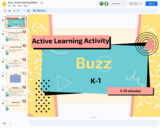
K.NS.1
1.NS.1
🎯 I Can Statement(s) 🎯
I can count from 1-100
I can skip count.
I can count forward orally by ones from 0 to 100.
I can count forward from any given number.
I can state the number before and after any given number.